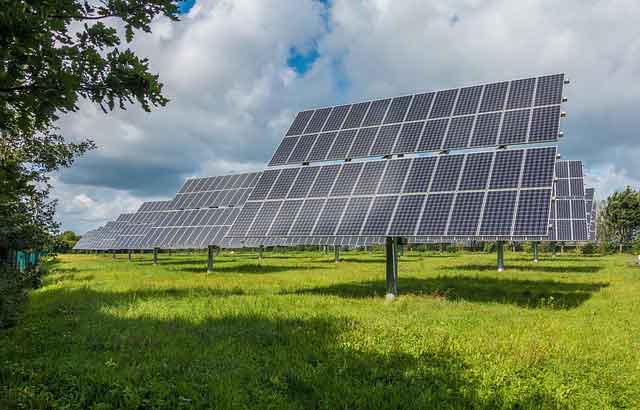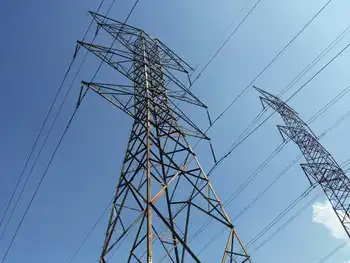Duke Energy creates new plan for Western Carolinas Modernization Project
By Duke Energy
CSA Z462 Arc Flash Training - Electrical Safety Essentials
Our customized live online or in‑person group training can be delivered to your staff at your location.

- Live Online
- 6 hours Instructor-led
- Group Training Available
Under the revised plan, the company will replace its coal plant in Asheville with two smaller gas units rather than one large one. As a result, the proposed 45-mile Foothills Transmission Line and Campobello substation are no longer necessary.
Western North Carolina is growing faster than most other areas in the Carolinas. To successfully meet the region's growing power needs, the revamped project will require significantly more participation in energy efficiency, demand-side management, renewable energy and developing technologies from the company, communities and customers in the region.
"I want to thank everyone who has been involved in this process for their input and patience, including those who sent us more than 9,000 comments regarding our proposed transmission line and overall project," said Lloyd Yates, Duke Energy's executive vice president for market solutions and president of the Carolinas region. "We believe the process worked.
"We have been committed to developing a plan to maintain the region's power reliability with the least possible impact on communities, property owners and the environment from the start of this effort, and we believe our revised plans accomplish those goals," said Yates.
The new plan does require a stepped-up effort to work with customers and interested groups to expand participation in programs to reduce peak power demand and grow renewable energy and associated technologies. It also includes a two-phased approach to reconfigure the Asheville Power Plant site that will provide the same significant environmental benefits as the original modernization plan.
"While the previous plan was more robust and scaled for the longer-term, the new plan balances the concerns raised by the community and the very real need for more electricity to serve this growing region," said Yates. "We're eager to ramp up our efforts in working with the community to reduce power demand across the region through energy efficiency, demand response, renewable energy and other technologies to work collectively to avoid building additional generation in the area for as long as possible."
Reconfigured Asheville Power Plant site
The reconfigured plan for the Asheville Power Plant site includes:
- Retiring the coal units as scheduled by 2020
- Building two highly efficient natural gas combined-cycle 280-megawatt units on the site, with the option for a simple-cycle 190-megawatt unit in 2023 or later, depending on the success of the company and community's efforts to reduce daily and peak power demand
- New units that will be designed to operate with a dual fuel source so oil can serve as emergency backup in the event of an interruption of the natural gas supply
- Plans for a utility-scale solar power plant on the site
- Rebuilding existing transmission lines and related substation upgrades using existing transmission rights-of-way to increase Duke Energy Progress' ability to continue importing enough power into the Asheville region to serve the region's growing power demand and meet federal power reliability standards
New plan features significant environmental and customer benefits
As with the original plan, the newly reconfigured natural gas units are estimated to have significantly lower environmental impacts than the existing coal plant.
- Sulfur dioxide will be reduced by an estimated 90 to 95 percent
- Nitrogen oxide will be reduced by an estimated 35 percent
- Mercury will be eliminated
- Water withdrawals will be reduced by an estimated 97 percent
- Water discharges will be reduced by an estimated 50 percent
- Carbon dioxide emissions will be reduced by about 60 percent, on a per-megawatt-hour basis, due to the efficiency of the new gas units and the fact that natural gas burns more cleanly than coal
The percentages above are conservative and include both phases of the modernization project. Final percentages will be determined after the company receives environmental permits.
The smaller combined cycle gas units have efficiency ratings similar to the original plan, which enables the units to be about 35 percent less expensive to operate than the existing coal units. These savings will be annually passed on to customers dollar-for-dollar via the company's annual fuel clause adjustment.
The company will be working with major suppliers of key components for the plant to further refine the overall cost estimate, but it is expected to be essentially the same as the original plan of approximately $1.1 billion.
"This region's economy is booming with 14 new hotels, two national craft breweries and more than $1 billion in new industrial investment in just the last five years," said Robert Sipes, Duke Energy's general manager of delivery operations for the Western Carolinas.
"So our challenge now is to support that growth while working with the community to reduce the region's peak power and ongoing demand through much more participation in energy efficiency programs, demand response and renewable energy and related technologies," added Sipes. "A great example of such a collaborative effort is Asheville's newly adopted Clean Energy Policy Framework where we look forward to being an active participant working with others to find real solutions to reduce peak energy demand."
Since 1970, peak power demand has more than tripled in Duke Energy Progress' Western Region, which serves 160,000 customers in nine Western North Carolina counties. Ensuring power reliability was particularly difficult during the winters of 2014 and 2015, when peak demand was 30 percent higher than in 2013. Over the next decade, continued population and business growth is expected to increase overall power demand by more than 15 percent.
The company plans to file for a Certificate for Public Convenience and Necessity CPCN with the North Carolina Utilities Commission for the new gas units in January 2016.











